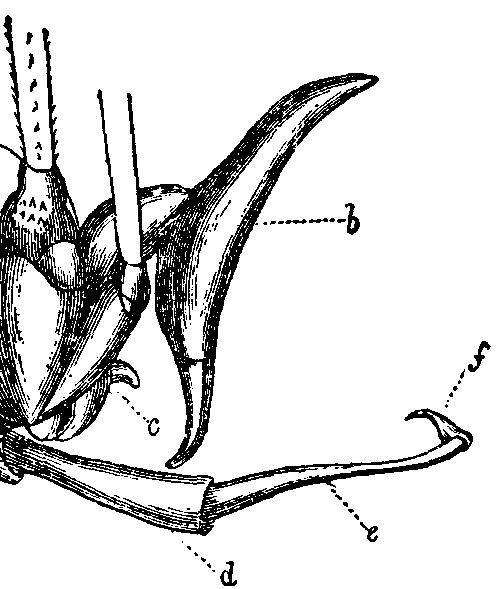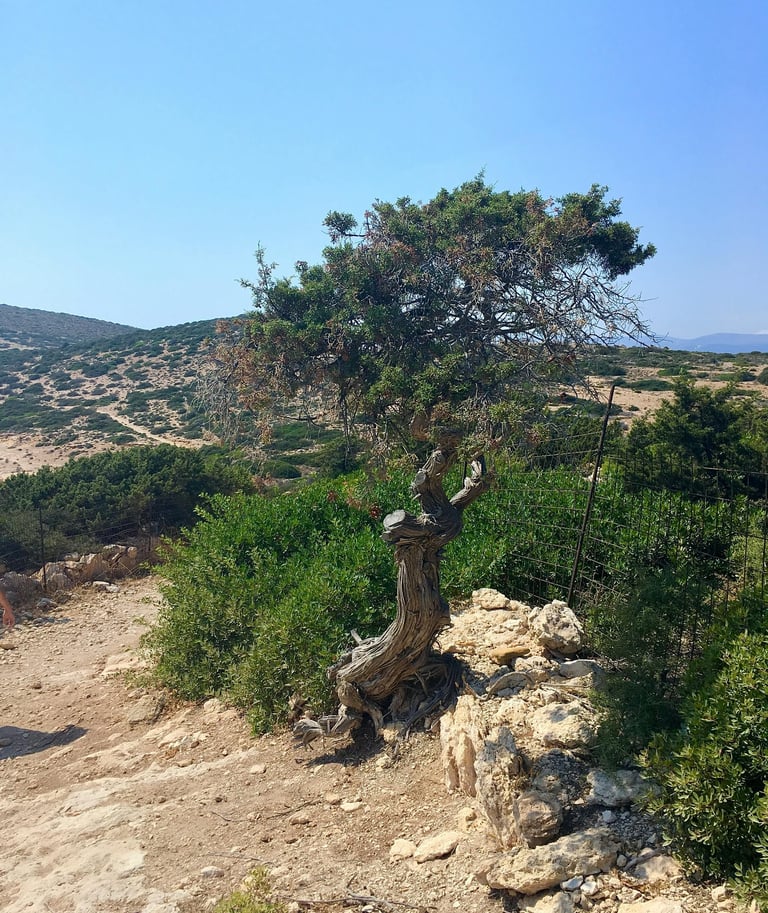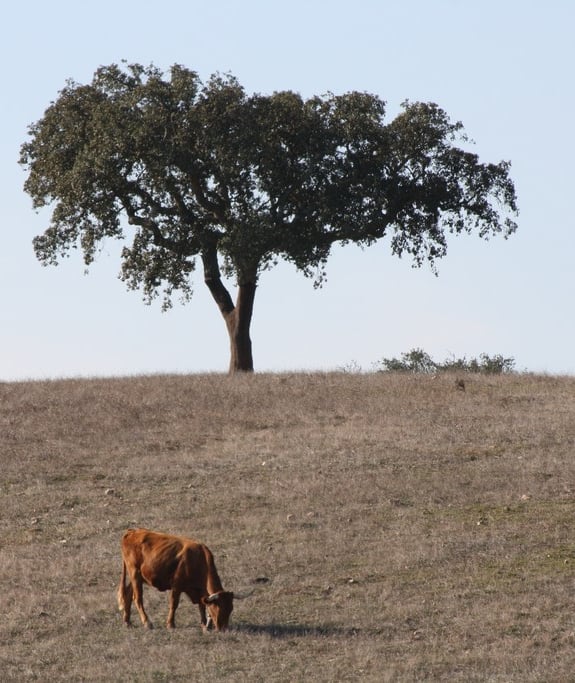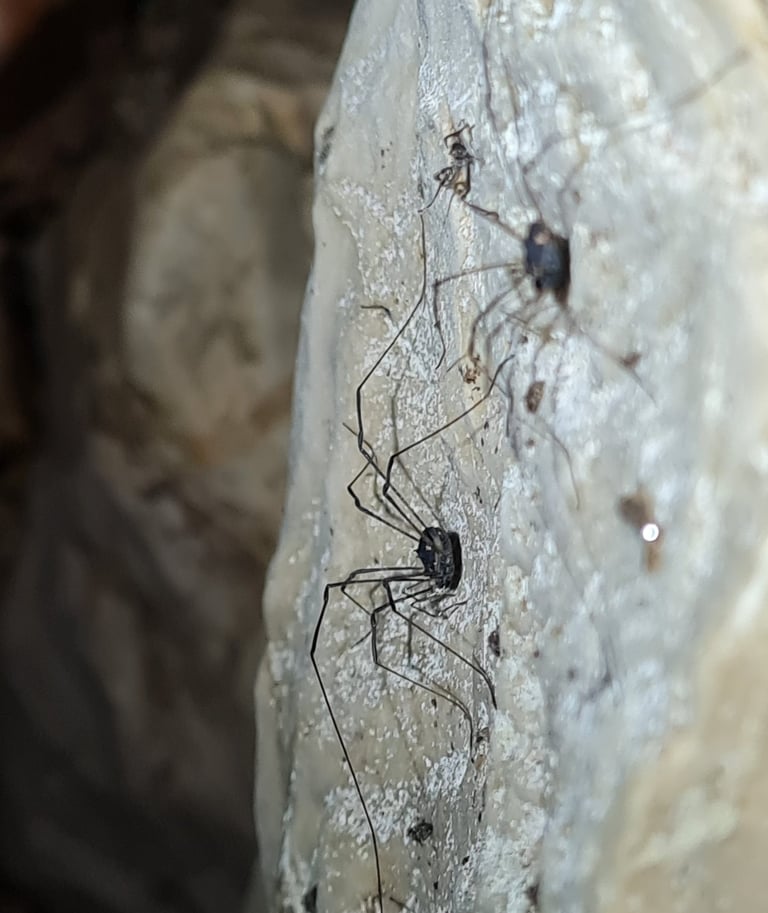Subterranean artificial cavities (e.g. tunnels, mines, and rupestrian settlements) have similar characteristics to natural voids, such as caves. These artificial cavities have been shown to provide habitats for wildlife and harbour high species richness. Despite the contribution of artificial cavities to subterranean biodiversity, no study examined the differences between caves and artificial subterranean ecosystems (ASE). The aim of the project was to study the patterns and drivers of biodiversity in natural (i.e. caves). You can find details regarding this project on the link below.


Variation of morphological diagnostic characters of Platybunus pallidus Šilhavý, 1938 (Opiliones) (Senckenberg Natural History Museum Frankfurt) (mobility grant);
Platybunus genus (Opiliones: Phalangiidae) comprises 7 species distributed manly in Europe (https://fauna-eu.org/). Six species occur in Romania (Babalean, 2005). Also from Romania, in 2014 a new species belonging to Platybunus genus was described, i.e., P. banarascui (Babalean, 2004). The diagnostic characters used for Platybunus species identification are the male genitalia structures, body (dorsum), ocularum, chelicerae and pedipalps characteristics. However, due to doubtful taxonomic state of some species (Murányi & Lengyel 2006) and because some specimens show interspecific similarities a taxonomic revision of the genus Platybunus, especially populations from the Carpathian arch, is need (Murányi & Lengyel 2006, Babalean, 2016, 2018). The objective of the project was to study the intraspecific variation and taxonomic value of the characters used in the Platybunus species identification.


Use of microhabitats by ground-dwelling arthropods - an analysis along an land use and altitudinal gradient in Koiliaris (Greece) (eLTER H2020grants; 2018);
Koiliaris River watershed (Greece) is severely affected by soil degradation and consequently likely to be at high risk of future desertification. Arthropods are the most abundant taxonomic group in many land-based ecosystems and are particularly sensitive to microhabitat change. In arid and semi-arid regions, shrubby or vegetation patches are important microhabitats for arthropod communities and understanding the possible role of these microhabitats in the persistence of ground-dwelling arthropods is crucial for soil conservation measures or land restoration. The project aimed to identify the factors affecting the use of three main microhabitats, i.e. patches under shrubs, vegetation patches and bare grounds, by ground-dwelling arthropods in two different land use types (olive orchards and grasslands) and along an altitudinal gradient in Koiliaris River watershed.


Assessing the impact of dryness on harvestmen (Opiliones) from Montado (Portugal) (eLTER H2020 grants; 2016);
Portugal is the most affected country by desertification in the European Union. This situation is aggravated at the south regions where the exploitation practices of natural resources are inadequate. Land-use intensification in “Montado” agro-forest systems has increased the pressure on biodiversity, concerning in particular species vulnerable to dryness. Identifying the factors affecting the species occurrence in different habitats is crucial for understanding the impact of dryness on species linked to land use management. Harvestmen (Arachnida: Opiliones) are especially abundant in mesic and wet environments and are sensible to even slight variations in environmental conditions. The project aimed to document the distribution and the abundance of harvestmen species in different microhabitats (e.g., herbaceous vegetation, shrubby and leaf-litter) and under different land-use. The project was carried out in two sites that differ in the vegetation cover, leaf-litter presence, shrub density and intensity of grazing.


Factors influencing habitat use by harvestmen communities (Arachnida: Opiliones) Mehedinti Geopark (PN-II-RU-PD-2011-3-0088; postdoctoral UEFISCDI grant; 2011 – 2013).
Harvestmen (Arachnida: Opiliones) are widespread in terrestrial environments; their abundance reaches high values especially in mesic and wet environments and reveals a strong dependence on environmental parameters. Previous studies indicate that harvestmen can be sensitive to changes in habitat structure and to different human impacts. They could be models for the study of local factors that influence cave colonization because they inhabit both subterranean and epigean habitats. In Romania four species that inhabit the subterranean environment are troglophilous, with populations that complete their life cycle in caves as well as populations that complete their life cycle outside caves. For species that use caves as temporary habitat, their relationship with those habitats is very complex. The project aimed to identify the habitat characteristics useful for predicting the occurrence of harvestmen species in caves and the epigean environment.

